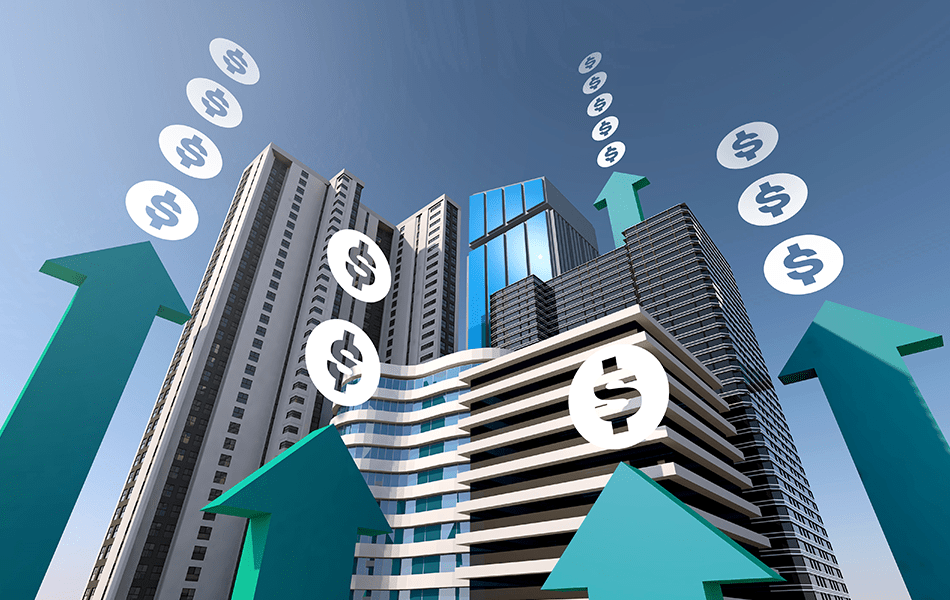In the upcoming years, it is anticipated that the Philippine housing market, including a condominium development, would expand consistently. Numerous reasons, including population growth, economic expansion, and infrastructure improvement, are fueling this growth.
In this article, let’s pull the curtain on the state of condo property prices and appreciation in the Philippines for the next five years. We’ll also discuss factors contributing to condo value appreciations, the importance of investing in emerging locations in Greater Manila Area (GMA) and regional areas nationwide, and why compact living may be a suitable lifestyle for you.
Rising demand in the Philippine real estate market
The Bangko Sentral ng Pilipinas (BSP) Residential Real Estate Price Index increased by 6.3 percent in the third quarter of 2022, recovering from the two-quarter decline in Philippine real estate prices. This change in trend was significantly influenced by the rising demand for compact spaces through condominiums.
Real estate predictions reveal that by 2027, more than a million housing units would be needed, according to experts. The main causes of this demand are the expanding population and the booming economy.
The National Capital Region’s local housing units demand increased last year. Colliers estimated that 5,600 condominium apartments will be completed in 2025, and by the end of 2027, the major commercial districts in Metro Manila would have 166,400 available units.
In terms of market categories, the housing units demand will continue to be driven by the mid-income sector. The demand for luxury condominiums has also increased throughout the real estate industry.
According to BSP, the recovery of Philippine property prices was due to stronger consumer demand for condos in the National Capital Region (NCR) in particular. This demand for upscale properties, according to Colliers, will continue in the next 5 years.
Property Prices of Condominiums in the Philippines
Condo property prices have been significantly impacted by the COVID-19 outbreak across the nation, declining for four consecutive quarters prior to the latest uptick. There is optimism that the improvement in Philippine real estate values would bring greater and better things in the following years.
The Residential Real Estate Price Index (RREPI) shows that from October to December 2022 property rates nationwide increased by 4.9 percent. It was a greater rate of growth than the 0.8 percent growth seen during the same time period in 2021.
Property prices increased by 1.1 percent on a quarterly basis in the fourth quarter of 2022 as demand for real estate increased. This is the result of the relaxation of quarantine regulations.
High-end condo units
The most expensive condo market in the Philippines is found in Metro Manila’s Makati. The average luxury condo unit price for sale in Makati central business district was Php13.83 million, higher than anyplace else in Metro Manila.
The fact that Makati is home to some of the most expensive real estate in the Philippines, should not come as a surprise. Makati is the center of financial activity in Manila, too. Outside NCR, you can also find high-end condos in Cebu City and Mactan Island offering tranquil landscapes and pool.
Value-priced condominiums
Southern condos are the cheapest priced but provide the best value for money, whether you just need a one-bedroom unit or one that’s good for a small family. The best places to hunt for semi-uninhabitable housing units in Metro Manila are Paranaque, Muntinlupa, and Las Pinas, where they may be found for, respectively, Php3.9 million, Php3.64 million, and Php3.1 million, albeit probably not for long.
Residential Real Estate Loans
Because transaction taxes—which are commonly referred to as “capital gains taxes,” but are not technically such—and the official income tax rates that apply to non-resident investors are high, investors should rush to invest in Manila.
Current housing lending rates charged by major commercial banks range from 4.99% to 7.5% for one-year fixed loans and from 7.5% to 9.75% for ten-year fixed mortgages. After hiking it five times in 2021, the BSP held its policy rate for overnight borrowing at 4.75% in March 2022.
Interest rates are rising; the mortgage market is still small. Plus, the large informal housing sector and its incentives deter low- to middle-income households from purchasing or renting real estate for their personal sanctuary.
Real estate loans fell by 11.5 percent in the fourth quarter of 2021, a greater decrease than the 3.6 percent dip experienced the year prior. A 5.9 percent gain outside of Metro Manila helped residential property price loans grow by two percent on a quarterly basis.
Additionally, roughly three out of every four mortgages obtained during the time period under consideration were used to buy new homes.
The nation’s state-owned and subsidized housing loan provider, Pag-IBIG Fund, offers a fixed rate of 3% for 30 years for socialized housing units. The issue is that these budget homes are frequently located distant from places of employment.
According to a quarterly analysis, residential real estate loans increased by 2%, helped by a 5.9% gain outside of Metro Manila. Additionally, throughout the time period under examination, roughly three out of every four housing loans were used to buy new homes.
Condo Appreciation Rate Philippines
According to research by the Global Property Guide, within Metro Manila, real estate prices rose by 5%, while 5.1% more people moved to places outside the NCR once every three months. The gross rental yields in Metro Manila continue to be good, ranging from 7.01% on the smallest condominium units of 45 sq. ft. to a whopping 20.09% on the largest. m. 7.16% on 80 square feet. m. condos. These yields do not include taxes or other costs.
The value of the condominium unit itself is expected to increase over time. This is a result of the simple reality that land is getting harder to find, particularly in urban areas like Quezon, City, Makati, Metro Manila, Pasig City, Pasay City, Taguig City, and the like. Therefore, even after 5 years, if you own a condo that is situated in a desirable region, its value is likely to increase.
Low to middle income families find it less appealing to own or rent properties due to the condominium rates, huge informal housing market, and its incentives. These variables result in a tiny ratio of residential mortgage loans to GDP, which was 3.85% of GDP in 2018 (up slightly from 2.03% of GDP in 2009). In the Philippines, the majority of vertical homes are pre-sold or sold for cash, with developers providing financing.
Factors Affecting Condominium Appreciation
From the prime location of a condo project to economic conditions and top-tier amenities such as swimming pools and condo gyms, various elements help drive the value appreciation of condominium units over time. Let’s talk about these more below.
1. Developer Reputation
Buildings constructed by reputable housing developers typically increase in value faster than those that are not. In addition to needing to raise additional money, these developers must maintain their good name.
Additionally, despite market instability in the next 5 years, condominiums attract higher demand and offer premium rental returns because of its high-end features.
2. Demand and Supply
The relationship between demand and supply are important elements that influence the increase in condo value. Prices will often decrease if supply outpaces demand. Price increases, however, when supply is insufficient to meet demand.
Choose a condo that is consistently in high demand to protect your investment from supply and demand volatility even after the next 5 years. This can include condominiums that are close to important businesses, cities, schools, and the likes.
3. Economic Index
Real estate values are influenced by the country’s general economic situation. This is because a person’s capacity to purchase or sell a property is frequently influenced by economic factors. The labor market is impacted by economic downturns, and homebuyers are less likely to be able to purchase a starter home; prices will decrease.
In contrast, when the economy is growing rapidly, more jobs are created and individuals make more money. People become more inclined to invest in a second property or acquire a first home. Higher house prices will result from the increasing demand.
4. Location
When it comes to the increase in the value of a real estate property, the significance of location becomes even more evident.
Condo locations vary widely. Areas posed for growth are in greater demand because they often mean more infrastructure projects to be built soon, and that it’s close to transportation centers, among others. Additionally, there are condo communities that are close to grocery shops, shopping centers, hospitals, and schools.
Make sure your condo is in a wise and practical investment location to increase your chances of owning one that increases in value for the next 5 years or even more. New individuals will desire to move into the condo if more local infrastructures are built nearby. Property values and prices are driven by growing demand.
Meanwhile, some people also factor in the panoramic views that they can see from their higher floor unit. For example, those who want to invest in a condo in the capital region would surely want to bear witness to the exquisite Manila Bay sunset amid the growing cityscape.
Those who prefer living outside the metro as a practical solution to escaping the unbearable traffic and noise pollution, on the other hand, would want to enjoy calming views provided by open greens and quieter atmosphere.
5. Services and Facilities
Many condominiums, particularly high-end and premium ones, provide their inhabitants with the best services and facilities. These might include thoughtfully designed spaces for social gatherings, exercise facilities, swimming pool, and rooftop gardens.
Some even have shops and restaurants where renters can eat and shop for practical living. These comforts inevitably increase a property’s appeal and increase its value.
Understanding the various sorts of construction units is also crucial. For instance, ordinary or low-rise condos in the Philippines are frequently less expensive than high-rise structures and are typically found outside of or in less populated areas of the city. Mid-rise condos with fewer floors and locations on quieter streets typically have reduced maintenance costs.
Asterra, the Philippines’ latest condominium brand, aims to provide value-packed condominiums for Filipinos from all age groups, from working Gen Zs, on-the-go millennials, retirees, and even overseas Filipinos wanting to have an investment property that is certain to appreciate in market value over time.
Talk to one of our Asterra representatives today and take a step closer to condo ownership where every square meter matters!





